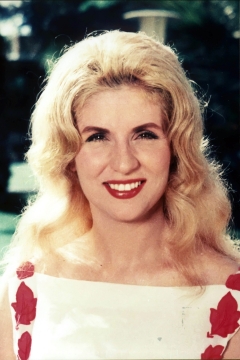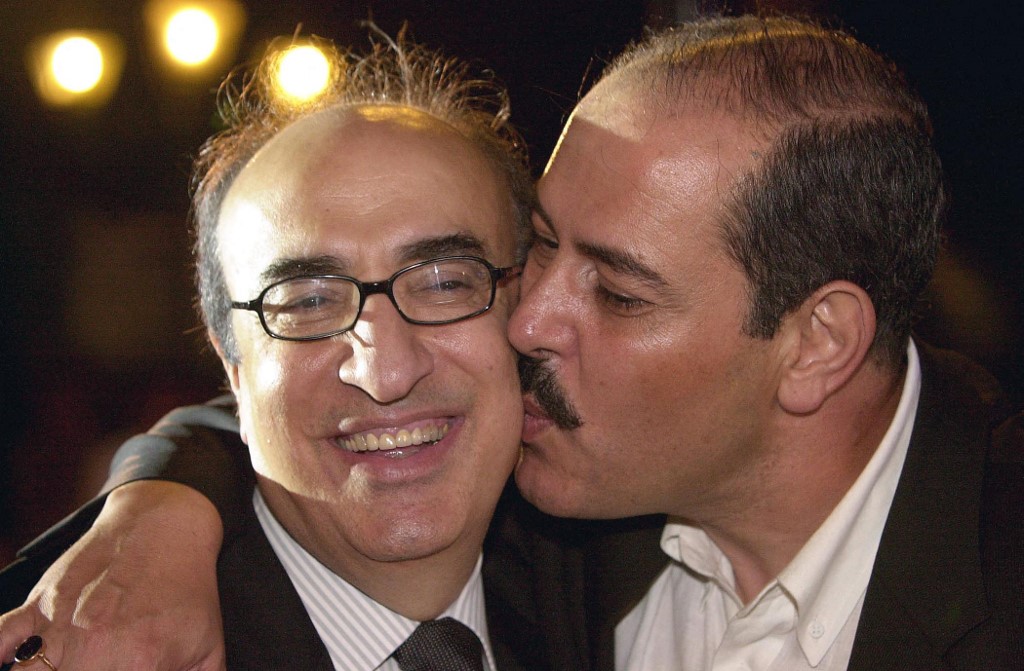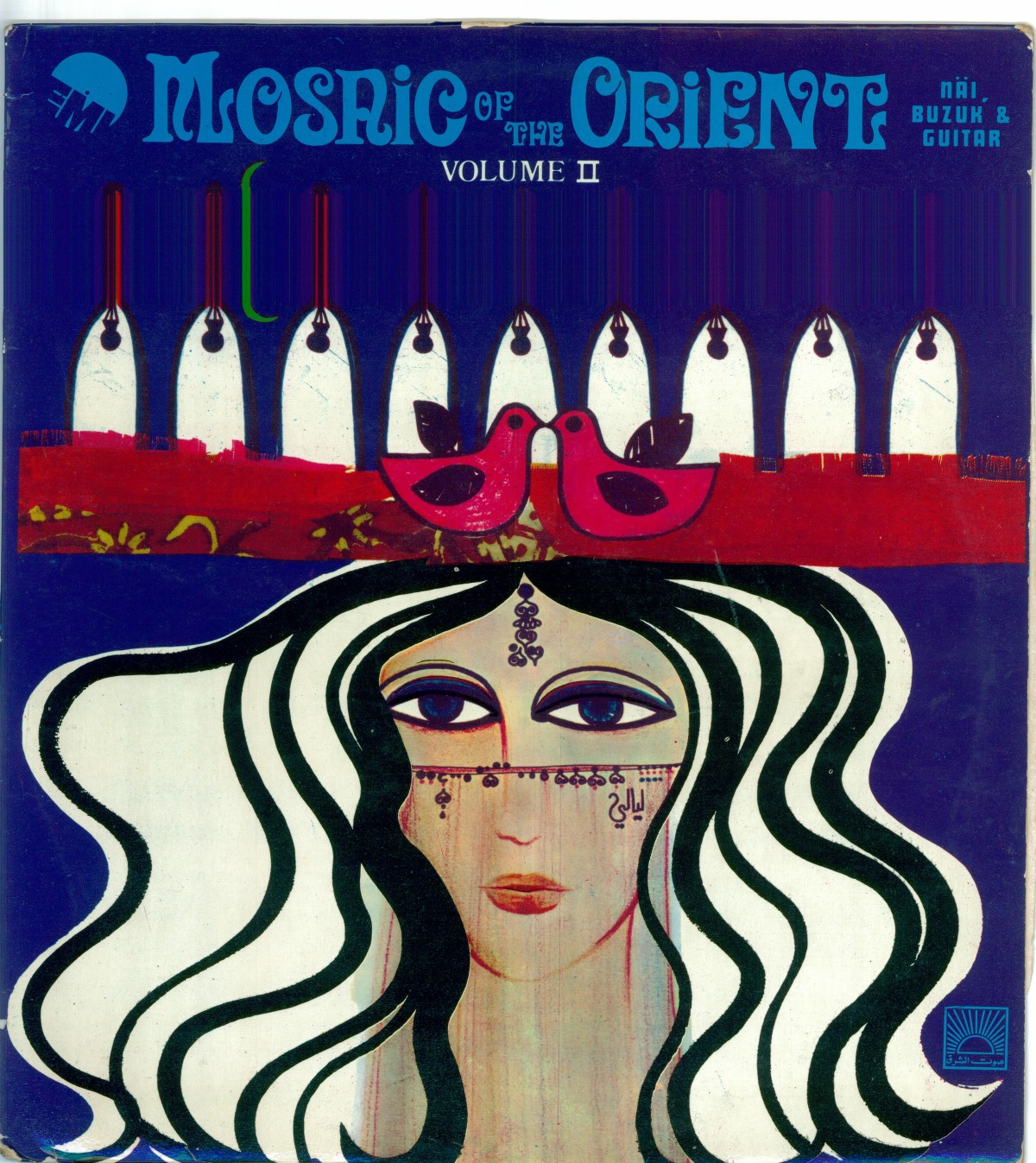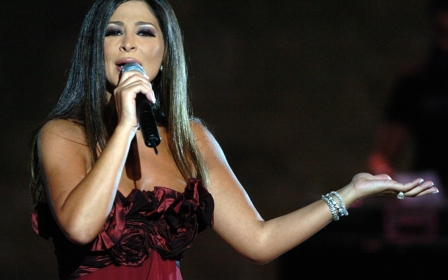Elias Rahbani: Eleven tracks that defined Lebanese musician's life and legacy

On 4 January, Lebanon lost one of its last great composers of the past century, Elias Rahbani, to Covid-19 at the age of 83.
The younger brother of the late Assi and Mansour Rahbani, the famed musical duo known as the Rahbani Brothers, Elias, over a decade younger, launched his own independent career and became one of the leading figures of Lebanese pop music.
New MEE newsletter: Jerusalem Dispatch
Sign up to get the latest insights and analysis on Israel-Palestine, alongside Turkey Unpacked and other MEE newsletters
Throughout his prolific music career, he composed and arranged songs for some of the biggest stars in Lebanese music including Fairuz, Samira Toufic, Wadih el-Safih, Taroub, Majida el-Roumi and Melhem Barakat, as well as launching the careers of countless others.
His death marks the end of an era that defined the sound of modern Lebanese music.
Over the phone from Beirut, Lebanese composer and arranger Ihsan al-Mounzer – an old friend of Elias, who collaborated with him on several projects – reflected on Rahbani's impact on the Lebanese music scene:
“I was very, very struck by the news of his death. Elias Rahbani was like a big brother to me.
"When I was in Italy, I used to listen to his music and play it in the hotels and clubs. I used to play his compositions Night Entertainer and Habibati on the piano and people wouldn’t stop dancing.”
The birth of a legend
Born in 1938 in Antelias, a coastal town five kilometres north of Beirut, he studied at the Lebanese Conservatory, and under French musicians Michel Bourgeot and Bertrand Robillard.
While working as a musical advisor at Radio Lebanon and composing French and English songs for little-known artists, his collaboration with the iconic Lebanese singer and actress Sabah – which would launch his career - began. Rahbani went on to work extensively with her throughout the 60s, 70s and 80s, writing many of her most well-known hits.
By the time he was 31 he had already composed songs that became immediate classics across the region, and which remain an important part of the Lebanese repertoire, including Sabah’s Sheftou Bel Anater (I Saw Him Under the Arches, 1964) and Fairuz’ El Oudal Mensiyye (The Forgotten Room, 1969).
A true musical maverick, despite working with celebrated mainstream artists Rahbani was one of the pioneers of alternative and underground music in Lebanon. Early in his career, he experimented with the latest electronic instruments, and was one of the first to use synthesisers in Arabic music.
He also introduced contemporary international music trends to Lebanon, exploring genres such as ye-ye, psych-rock, 60s pop, Franco-Arab, Latin, beat and chansons.
In the 60s and 70s, he wrote and produced some of the country’s most innovative records, frequently collaborating with upcoming artists. Some of them found short-lived fame, such as Lebanese-Armenian psych-rock band The News, while others became established names like Maya Casabianca, Manuel and Sammy Clark.
In addition to songs, Rahbani composed soundtracks for over 20 Egyptian and Lebanese films, as well as writing the themes to popular Lebanese TV series Allo Hayati and Diala.
The first in the Arab world to write music for TV and radio adverts, his jingles for Rayovak batteries, Tatra Dairy and Picon cheese formed a kind of bizarre war-time soundtrack, released during Lebanon’s civil war in the late 70s and early 80s, and are still ingrained in the Lebanese collective memory.
He also wrote an album of nursery rhymes for children, sung by his young sons, and even composed anthems for political parties across Lebanon, whether or not they had contradictory politics.
Rahbani’s innovation in music continued throughout his career; in the early 70s he released the forward-thinking instrumental album series Mosaic of the Orient, which have since become cult records across the international clubbing scene.
The composer claimed to have written over 6,000 melodies throughout his career, including advertising jingles – a number which is easily plausible, considering his fertile creativity and the longevity of his career. This would no doubt make him Lebanon’s most prolific composer of all time.
Elias is survived by his wife, Nina Khalil, and two sons Gassan and Jad, who both work in music. His death was mourned throughout Lebanon and the Arab world.
“Elias Rahbani is a big icon, irreplaceable in music. He brought Eastern-Western trends and flavours into music, and a lot of beauty; he even made beautiful adverts,” says Mounzer
Beyond his enormous contribution to the Lebanese discography, Rahbani leaves behind a legacy of music schools where music will continue to be taught to children under his name.
MEE has compiled a list of 11 tracks that define the life and legacy of an illustrious Lebanese musician.
1. Shish Bourak and Leila Leila, by Fawez (1960s)
Among his earliest compositions in the 60s, Shish Bourak and Leila Leila (Jolie Fille) are good examples of the Franco-Arab wave of the era, that was popularised by hits such as Mustapha by Bob Azzam and L’Oriental (The Oriental) by Enrico Macias.
These compositions show Rahbani's diverse and eclectic musical identity and that he was tapping into the latest international music trends.
Though Fawez, the singer of the record, released only this single and is hardly known today, the song itself travelled beyond Lebanon’s borders when it was covered by a number of artists, including the famous Yugoslavian singer Miso Kovac in 1968.
Rahbani also revisited the song in 1972, rearranging it as an instrumental for his album Mosaic of the Orient, Vol 1. The song was still being covered into the 80s with versions by Lebanese singer Tony Valiere and Armenian singer Mateos.
2. Quand passent les Cigognes/ Non, Je Veux Retourner, by Manuel Manankichian (1960s)
In the mid-60s, Rahbani composed multiple singles for the Lebanese-Armenian artist and actor Manuel Manankichian, who later gained popularity in Armenia and toured across the Soviet Union, where he released records with the label Melodia.
The A-side of this record, Quand passent les Cigognes (When the storks pass), is a typical French chanson that was popular at the time, dominated by artists like Jacques Brel and Charles Aznavour, who Manuel reportedly studied singing with in Paris in the late 1960s.
On the record’s B-side is the overlooked explosive organ-studded song Non, Je Veux Retourner (No, I Want To Go Back), in the style of the ye-ye genre, which was a response to the UK’s wave of beat music to the young, hip generation in France.
Among the singles Rahbani wrote for Manuel are La Guerre est Finie (The War is Over), which launched the singer’s career, and Tammy, which Rahbani revisited a decade later with an Arabic version for Lebanese pop singer Sammy Clark.
3. From the Moon / Tell Me, by The News (late 60s)
Rahbani collaborated with a number of artists from Lebanon’s Armenian community, among them the Armenian-Lebanese prog-rock group The News. The four-member band released a series of singles throughout the 60s and early 70s to international acclaim and they toured across Europe.
Their singles were later gathered for their only album Old Wine New Bottles, released in 1975 on Lebanese label, Voix De L’Orient. Rahbani arranged all of their songs including their 1974 pop-rock single Teardrops, which found some success in Lebanon. Arguably their most interesting single, From the Moon was composed by Rahbani and released in the late 1960s.
Unusually, the single From the Moon didn’t find its way onto their album, unlike its B-side Tell Me, perhaps because it was the only song not composed by the band’s vocalist and lead guitarist John Taslakian, who went by the alias John Wilde.
The song is one of Rahbani's most experimental and edgy records with its fuzzy guitar and moog-filled intro, heavy drums and psychedelic vocals, that sound as if they were recorded in space, repeating the line: 'We come from the moon… we’re looking for peace.’
Released independently as a seven inch, in limited numbers, From the Moon is a sought-after record among DJs and collectors of psych and ‘60s garage music today, selling for over $600 when it appears on record selling sites.
Almost a decade after its original release, the song appeared in a slightly different version on the B-side of the 12-inch single of Rahbani's disco record Liza… Liza.
4. Hully Dabkeh Ya Ba Off / Sola Cha Cha Cha, by Sabah (1964)
Rahbani played a key role in the career of iconic singer and actress Sabah, writing scores of melodies for her that are still celebrated today in the Arab world.
Sabah started her career in the 1950s performing in glamourous hotel resorts such as Piscine Aley and Grand Sofar, alongside stars like Abdel Halim Hafez, Wadih al-Safi and Farid al-Atrache. By the 1960s she was already an established name, starring in the Rahbani Brothers’ Baalbeck International Festival musicals and in a number of films.
She rose to enormous fame across Lebanon and the Arab world, becoming one of the region’s most celebrated singers of all time. Released in 1964, Hully Dabkeh Ya Ba Off and Sola Cha Cha Cha were among Elias’s earliest compositions for Sabah.
Alongside her traditional and dabke styles, Sabah was open to singing modern songs with faster rhythms, which cemented her reputation as a leading pop figure. Both sides of this single are a mixture of Latin pop, mixed with a dabke stomping beat; Sabah sings in French – an unusual and forward-thinking combination of styles at the time.
Today, the songs have been brought back to international dancefloors, played during club nights and on radio shows around the world. This demand for the single has resulted in an inflation of its price on the record market.
5. Shayef Elbahr / El Oudal Mensiyye, by Fairuz (1969)
This record is a double-sider by Fairuz featuring two impactful singles - the Rahbani Brothers’ composition Shayef Elbahr (Do You See the Sea?) on the A-side and El Oudal Mensiyye (The Forgotten Room), one of Rahbani's earliest compositions for the singer, on the B-side, with lyrics by his brothers Assi and Mansour.
It’s a good example of the differing styles that Elias and the Rahbani Brothers brought to Fairuz.
Appearing in the same period when Rahbani was making psych-rock, ye-ye and French chanson, El Oudal Mensiyye is a modern and dreamy mid-tempo romantic ballad, illustrative of the multi-layered identities of his career.
6. Mosaic of the Orient, Vol. 1 & Vol. 2, by Elias Rahbani (1972 and 1974)
Released by Lebanese record label Voix De L’Orient in the 1970s, Mosaic of the Orient is a collection of innovative instrumentals, spread over two volumes, where Rahbani revisited some of his old songs, alongside new compositions.
These albums came out in the mid-70s at the peak of the electrification of music around the world, where rock music was being fused with many genres, bringing new styles to the fore such as jazz fusion.
Here, Rahbani continues his experimental approach to music, bringing together electric guitars, synthesizer, electric bass and drums with Oriental instruments such as nay, oud and tabla drums. Fusing these instruments together with Oriental melodies created the completely new and unique sound of psychedelic Arabic pop.
Both albums were recorded in Polysound, the studio of visionary Lebanese sound engineer Nabil Mumtaz. "They were very close friends. They spent a lot of time discovering sound together," says Jad Rahbani of his father and Mumtaz’s relationship.
“Elias liked to know a lot about sound, technique and recording. He used to spend night after night with Mumtaz to make trials, record frequencies and perfect the sound of the drums.”
Tracks from both albums have been sampled by contemporary artists over the last decade: Dance from Maria was first sampled in 2011 by American rapper Joell Ortiz on his song Finish What You Start.
It was sampled again seven years later by the Black Eyed Peas, on their song Ring the Alarm. Greek hip hop group Terror X Crew also sampled La Dance de Nadia in 2000.
7. Love Theme from Habibati, by Elias Rahbani (1973)
Throughout his career, Elias wrote soundtracks for 25 Lebanese and Egyptian films, such as Ahlan Bil Hob (Welcome to Love), shot in 1968 and directed by Muhammed Salman; Demi wa Dumoua’i wa Ibtisamati (My Blood, My Tears, My Laughter), shot in 1973 and directed by Hussein Kamal; and Ajmal Ayam Hayati (The Most Beautiful Days of My Life), shot in 1974 and starring Hussein Fahmy and Naglaa Fathi.
His theme for the 1973 film, Habibati, is one of his most recognisable instrumentals across his extensive discography. Directed by Henry Barakat, the romantic melodrama was set in Lebanon and starred famous Egyptian actors Mahmoud Yassin and Faten Hamama.
The theme, which was composed and arranged by Rahbani, and recorded with a large orchestra which he conducted, was hugely popular in Lebanon and the Arab world and covered by artists such as Egyptian electric guitarist Omar Khorshid.
8. Yay Yay Ya Nassini, by Georgette Sayegh (1973)
Released in the early 1970s, Yay Yay Ya Nassini (You Who Forgot Me), is typical of Rahbani's Lebanese pop hits of the era.
This kind of light synth-driven Arabic pop with catchy melodies dominated his sound throughout the 70s and 80s, when he was a star-maker.
Though she had a short-lived career, Georgette Sayegh’s songs are timeless and have remained engraved in Lebanese culture.
9. Fairuz – Kaan Enna Tahoun, by Fairuz (1974)
Another of Fairuz’s well-known hits, Kan Enna Tahoun (We Had a Mill), was composed by Rahbani as part of his collaboration with the Rahbani Brothers for the 1974 play Loulou.
He wrote several compositions for the play, including the second introduction, Fi Ahwa al Mafrak (There’s a Cafe on the Junction), Yalla Ya Ekhwan (Let’s Go Brothers), Al Hob Al Hob (Love, Love) and Raksat Samia (Dance of Samia).
Kan Enna Tahoun was copied by Turkish singer Huri Sapan in her song Bir Sans Daha Ver (Give Me One More Chance).
This wasn’t the first song by Elias to be sung by a Turkish artist; in 1975 the famous singer Ajda Pekkan covered his song Ka’an Izzaman (There Was a Time), which was written for Fairuz.
10. Liza… Liza, by Elias Rahbani and his Orchestra (1978)
From a different generation to his elder brothers, Elias Rahbani was known by his nephews as the young modern uncle who was tapped into the latest music trends.
He was the first in Lebanon to release a disco record, responding to the global music wave with the 1978 12-inch release Liza… Liza – a fuzzy orchestral disco record with erotic female vocals and an Oriental touch.
The record had some international success, played in discotheques and radio stations across the US and was covered by the Canadian group Body Heat in 1982, who remade it into a high-energy Italo disco version.
Elias released several orchestral albums in the 70s, featuring instrumentals that varied from easy listening ballads to funky TV themes and disco music.
11. Wa’adouni Wnatarouni, by Sabah (1982)
After recording almost exclusively at Nabil Mumtaz’s Polysound Studio throughout the 1970s, Rahbani was forced to set up a studio in the lounge of his Antelias apartment in the early 1980s, when moving across Beirut became too dangerous during the civil war.
As shelling intensified around their apartment building, which lacked a bomb shelter, Rahbani and his family moved into a chalet in the nearby resort of Rimal Beach in the mid-80s, retreating to the underground parking during shelling. They took a second chalet for the studio and continued work from there until just after the war ended in 1991.
Despite the logistical and financial challenges of war, Elias continued to produce music at a pace, releasing scores of albums with upcoming artists on Cobra and Rahbania, two record labels he founded with his friend Charbel Karam.
Released on Rahbania in 1982, Wa’adouni Wnatarouni (They Promised Me and Made Me Wait) was part of the soundtrack that Elias composed and arranged for Wadi Shamsine (Shamsine Valley), his 1982 play starring Sabah with a cast that included Ferial Karim, William Haswani, Najia Raidi, Maurice Matar, Louis Nader, Joseph Nassif, Elie Sneifer and Pascale Sakr.
A 1980s euro-disco style song with Arabic lyrics, its catchy melody was originally written by Rahbani as the jingle for a TV advert for Barilla Macaroni. Sabah liked the melody and asked him to adapt it for her.
Throughout the 1980s, Rahbani composed a number of songs on the synthesizer in a similar Euro disco style, such as Kezzabi (Liar) for Le Petit Prince, Lakini (Meet Me) for Issam Raggi and Adonis Akl’s Bedna Nzour El 3alam (We Want to Visit the World).
The low budget productions, which he composed and performed on synthesizer and recorded in his home studio, suited the constraints of war.
This article is available in French on Middle East Eye French edition.
Middle East Eye delivers independent and unrivalled coverage and analysis of the Middle East, North Africa and beyond. To learn more about republishing this content and the associated fees, please fill out this form. More about MEE can be found here.








